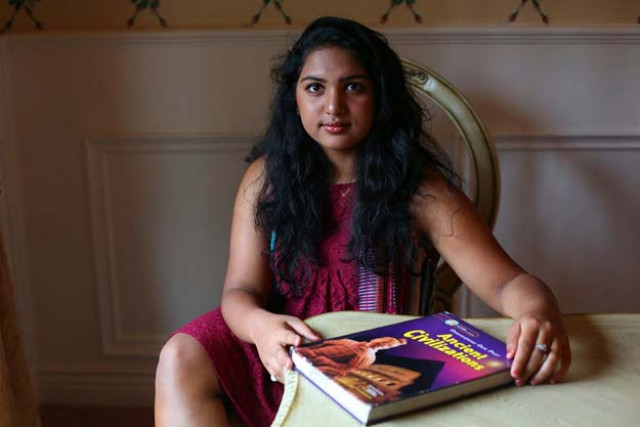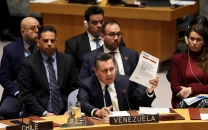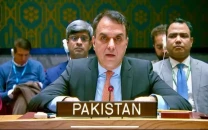India or South Asia? Debate rages in US over curriculum on region's history
Dispute centers on whether modern-day India, Pakistan, Nepal be referred to as India or as South Asia

Vidhima Shetty, a high school freshman in San Ramon, California says that using the term South Asian was akin to asking her to change her name. Photo: Jim Wilson/The New York Times
The dispute centers on whether the region that includes modern-day India, Pakistan and Nepal should be referred to as India or as South Asia, especially since India was not a nation-state until 1947.
At the Instructional Quality Commission’s meeting this spring, dozens of Indian-origin students turned up at the State Capitol, to urge the educators that anything other than India would amount to erasing their heritage. The debate has gained momentum with petition drives and opinion pieces, even prompting a social media campaign, #DontEraseIndia.
India seeks fines, prison time for people who make maps with the 'wrong' borders
Hindu American Foundation, in an attempt to shape India’s image of Hinduism in the United States, wants the entire area under dispute to be referred to as India, reflecting what they say is the most important influence in the area.
They also want the caste system to be explained as a phenomenon of the region, not as a Hindu practice — an idea that is not universally accepted in India.
However, another group of scholars have challenged the historical accuracy of this view, arguing the area should be referred to as South Asia. Further, they say the foundation is attempting to alter history by erasing any link between Hinduism and the caste system.
One high school freshman, Vidhima Shetty, told the committee that using the term South Asian would be akin to asking her to change her name.
 A page from a California textbook describing the caste system in India Photo: Jim Wilson/The New York Times
A page from a California textbook describing the caste system in India Photo: Jim Wilson/The New York Times“Names are what define us as people; they represent character and personality,” she said. “The board is confusing our cultural terms with geographical terms. By removing India as a term from the textbooks this leaves Indian-American children with no ethnic or cultural identification to turn to. When we acknowledge ourselves as South Asians, us Hindus are forced to re-identify ourselves as something we are not.”
Kashmir belongs to Pakistan and China, according to Twitter
Scholarly groups on both sides have submitted suggestions to the committee.
For example, a reference to “Early Civilisations of India” could be “Early Civilisations of South Asia,” or “In this unit students learn about ancient societies in India” could instead be “In this unit students learn about ancient societies in South Asia.”
“The civilisation that is being covered is Indian,” said Suhag Shukla, the executive director of the Hindu American Foundation, which started the social media campaign #DontEraseIndia. “When you talk about ancient India, that’s the birthplace of Indian students,” she said.
There are roughly 2.2 million immigrants from India living in the United States, according to the Migration Policy Institute, a Washington-based think tank.
The Hindu-American group has been pushing unsuccessfully for the past decade, for public schools to give more attention in the curriculum to the Hindu religion and Indian culture.
Indo-Pak border: Even Google Maps knows not to cross the line
However, scholars like Thomas Hansen, a professor of anthropology and South Asian studies at Stanford University are opposed to the group’s suggestions. “The issue is when you can use the term Indian and when you can use Hinduism,” he said, as opposed to South Asia. “This group has a lot of interest in calling everything Hindu and Indian so that it can equate modern-day India with historic roots. But it’s absurd. It would be like calling Ancient Rome Italy.”
The debate is similar to the one being held in India as Hindu nationalist governments begin overhauls of textbooks in some states.
“We have a lot of people engaged in this because we have such a vibrant, diverse state,” said Tom Adams, the deputy superintendent of the California Department of Education, adding, “What we’re really trying to do here is make sure that the children of California have a curriculum that helps them understand all these groups.”
The State Board of Education will vote on the final changes next month.
This article originally appeared on New York Times



















COMMENTS
Comments are moderated and generally will be posted if they are on-topic and not abusive.
For more information, please see our Comments FAQ